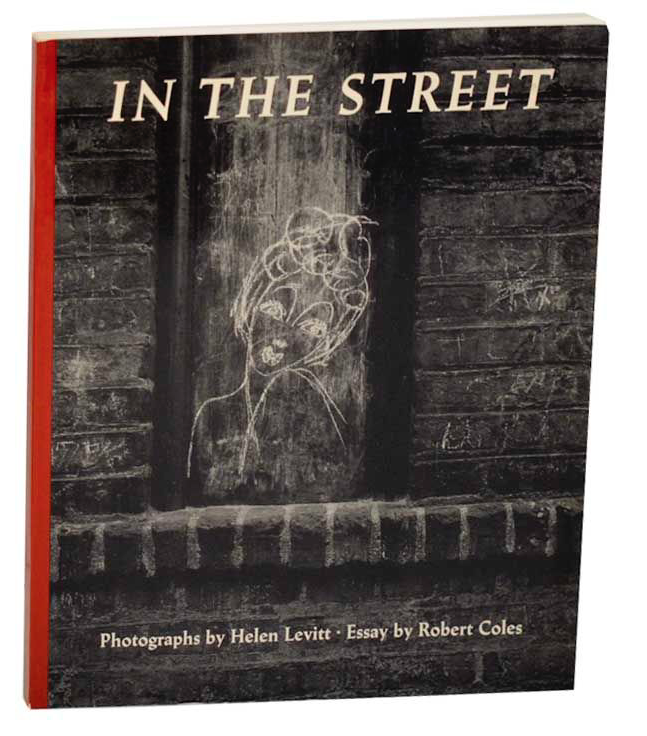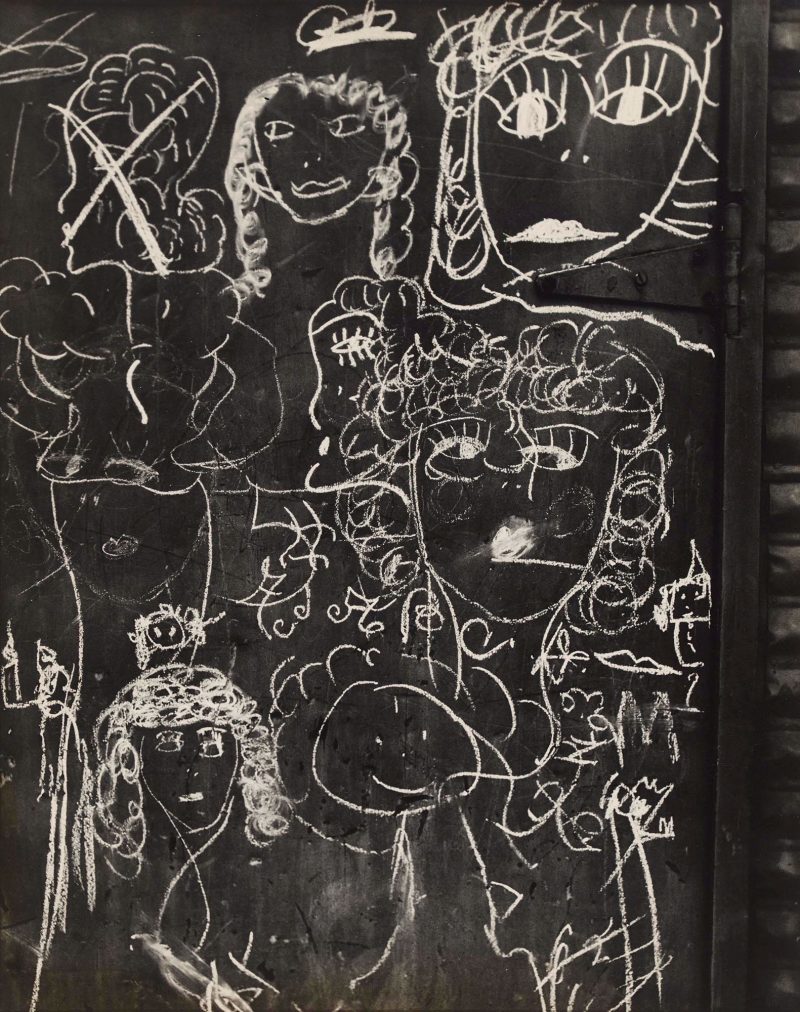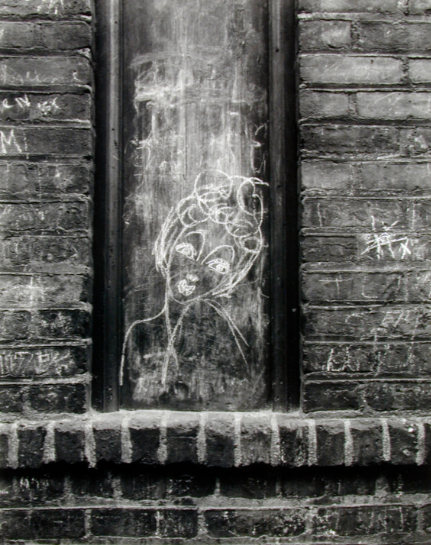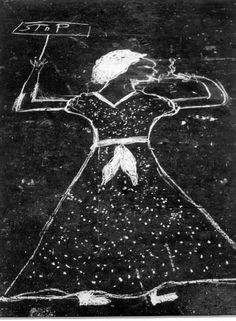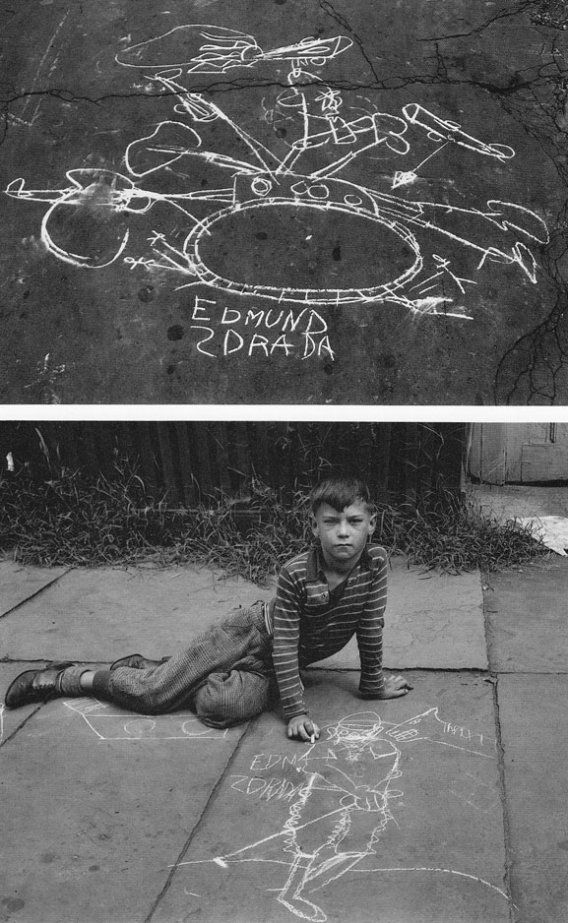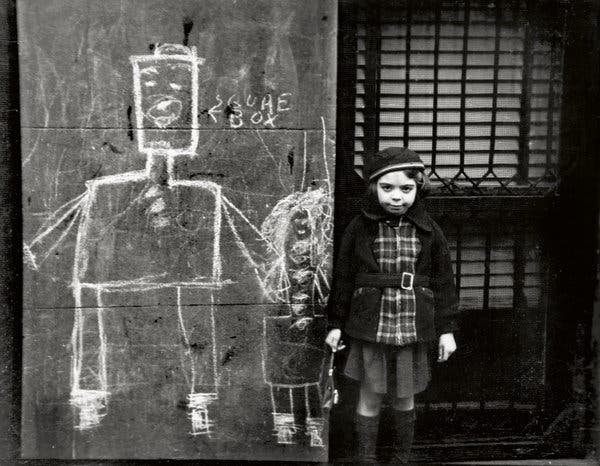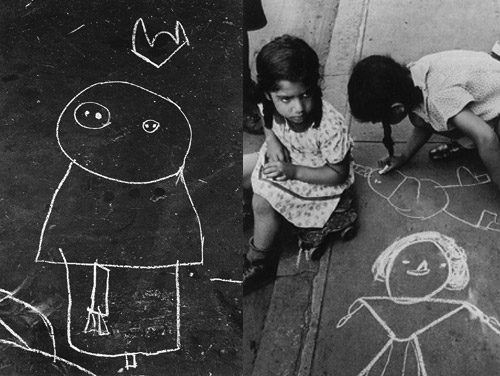‘In the Street’ Helen Levitt 1987
In the Street: Chalk Drawings and Messages, New York City, 1938-1948
Photographs by Helen Levitt
“All over the city on streets and walks and walls the children . . . have established ancient, essential and ephemeral forms of art, have set forth in chalk and crayon the names and images of their pride, love, preying, scorn, desire. . . . The Lady in this House is Nuts . . . . Lois I have gone up the street . Don’t forget to bring your skates . . . . Ruby loves Max but Max hates Ruby. . . . And drawings, all over, of . . . ships, homes . . . western heroes . . . and monsters . . . which each strong shower effaces.” So wrote James Agee in 1939. He shared this fascination with children’s street drawings and messages with his friend Helen Levitt. Here now are over one hundred of her photographs, made in the years between 1938 and 1948. Most of these pictures have never before been published. They have been selected and arranged by the photographer and carefully reproduced.
Robert Coles has written especially for this book an essay on the imaginative live of children and of a time when .” . . children still had some visual independence, some keen-eyed interest in laying pictorial claim to the world around them. . . . I have not seen scenes such as Helen Levitt offers in my wanderings through America’s city streets twenty and thirty and forty years after these were taken. They offer, then, a look backward–though they are also timeless in certain aspects. For children will never really stop being tempted by their imaginative faculties to show and tell–to let others see what they find themselves conceiving in thought and fantasy and dream.”
BIO:
Helen Levitt (August 31, 1913 – March 29, 2009) was an American photographer. She was particularly noted for “street photography” around New York City, and has been called “the most celebrated and least known photographer of her time.”
Levitt grew up in Bensonhurst, Brooklyn, NY. She dropped out of high school and went to work for a commercial photographer. There, she taught herself photography. While teaching art classes to children in 1937, Levitt became intrigued with the transitory chalk drawings that were part of the New York children’s street culture of the time. She purchased a Leica camera and began to photograph these works, as well as the children who made them. The resulting photographs were ultimately published in 1987 as In The Street: chalk drawings and messages, New York City 1938–1948.
She associated with Walker Evans in 1938-39. She enjoyed early success. In July 1939, the new photography section of the Museum of Modern Art in New York City included Levitt’s work in its inaugural exhibition. In 1943, Nancy Newhall curated her first solo exhibition “Helen Levitt: Photographs of Children” there. Her next major shows were in the 1960s; Amanda Hopkinson suggests that this second wave of recognition was related to the feminist rediscovery of women’s creative achievements.
In the late 1940s, Levitt made two documentary films with Janice Loeb and James Agee: In the Street (1948) and The Quiet One (1948). Levitt, along with Loeb and Sidney Meyers, received an Academy Award nomination for the screenplay of The Quiet One. Levitt was active in film making for nearly 25 years; her final film credit is as an editor for John Cohen’s documentary The End of an Old Song (1972). Levitt’s other film credits include the cinematography on The Savage Eye (1960), which was produced by Ben Maddow, Meyers, and Joseph Strick, and also as an assistant director for Strick and Maddow’s film version of Genet’s play The Balcony (1963). In her biographical essay, Maria Hambourg writes that Levitt “has all but disinherited this part of her work.”
In 1959 and 1960, Levitt received two Guggenheim Foundation grants to take color photographs on the streets of New York, and she returned to still photography. In 1965 she published her first major collection, A Way of Seeing. Much of her work in color from the 1960s was stolen in a 1970 burglary of her East 13th Street apartment. The remaining photos, and others taken in the following years, can be seen in the 2005 book Slide Show: The Color Photographs of Helen Levitt. In 1976, she was a Photography Fellow of the National Endowment for the Arts.
She lived in New York City and remained active as a photographer for nearly 70 years.
